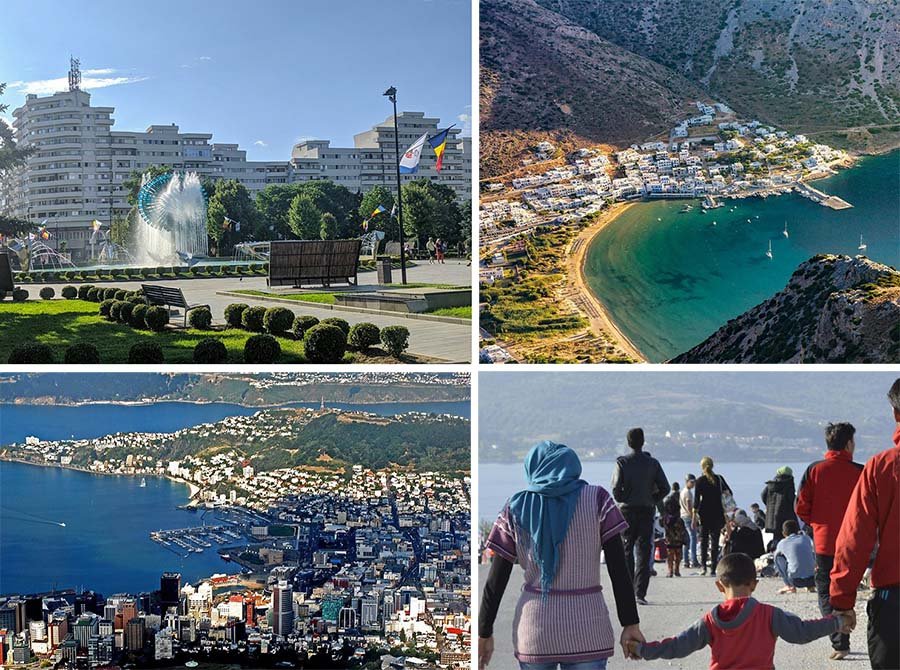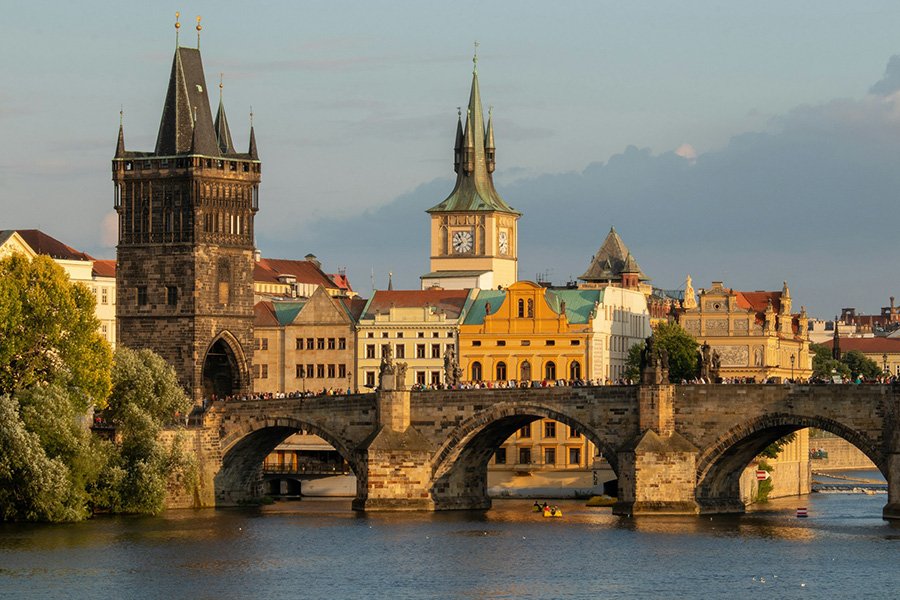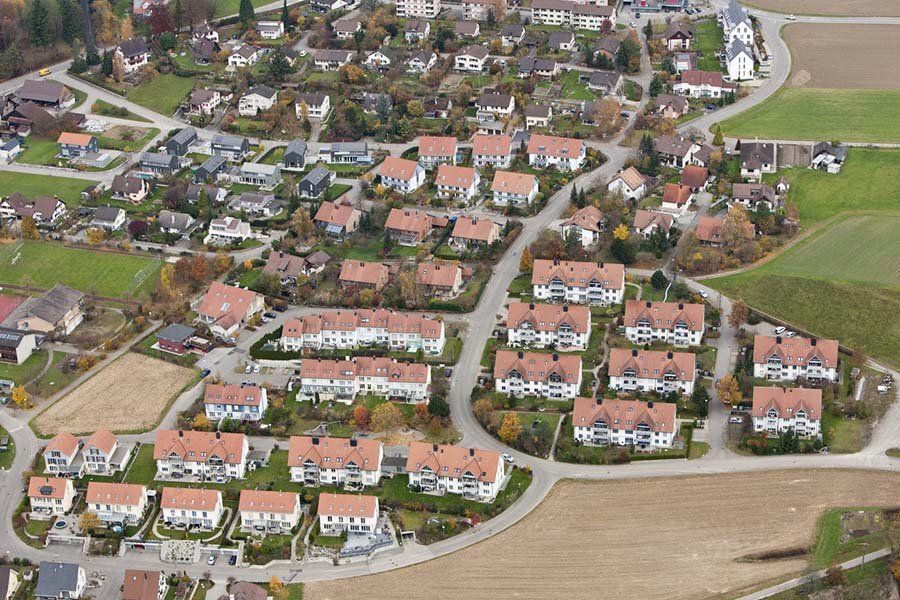читайте также
 Turkey’s Real Estate Market in 2024–2025: Risks and Restrictions for Foreign Investors
Turkey’s Real Estate Market in 2024–2025: Risks and Restrictions for Foreign Investors
 Migration News of the Week: Nomads, Investors, and Refugees
Migration News of the Week: Nomads, Investors, and Refugees
 Housing Prices in the Czech Republic Rising at Record Pace
Housing Prices in the Czech Republic Rising at Record Pace
 U.S. Visas: New Rules for Russia, Belarus, and Ukraine
U.S. Visas: New Rules for Russia, Belarus, and Ukraine
 Rising Consumption and Declining Rental Rates in China’s Shopping Malls
Rising Consumption and Declining Rental Rates in China’s Shopping Malls
 Baby Boomers Could Crash Switzerland’s Housing Market
Baby Boomers Could Crash Switzerland’s Housing Market
News / Reviews / Analytics / Tourism / Migration / France / Norway / Sweden / Hungary / Bulgaria / Albania / United Kingdom / Czech Republic / Switzerland / Germany / Spain / Ireland / Romania / Serbia / Ukraine / Iceland / Greece / Slovakia / Real Estate / Investments / Poland / Portugal / Austria / Denmark / Netherlands / Belgium / Latvia / Litva 04.07.2025
Life and Expenses in Europe in 2025: A Detailed Guide

Europe in 2025 offers an incredibly diverse range of living conditions and cost levels. The general trend shows that Western European countries (e.g. France, Norway, Switzerland) are significantly more expensive in terms of living costs, while Eastern Europe (e.g. Hungary, Bulgaria, Albania) remains more affordable. The difference is tangible: monthly expenses for a single person in Norway are estimated at around €1,125, whereas in Bulgaria it’s approximately €606. Major cities and economic hubs in Europe—such as London, Zurich, and Paris—consistently rank among the most expensive metropolises in the world. For example, the cost-of-living index in London is more than twice that of Prague (100) and over four times that of lower-cost cities in the Balkans. On the other hand, in the cheapest European countries, living costs can range from just $600 to $1,000 per month, particularly outside the capital cities. In 2025, Europe still feels the aftershocks of the global price surge from 2022–2023. Inflation has impacted food, energy, and housing, leading to a “cost-of-living crisis” that concerns the vast majority of Europeans.
Housing prices in the EU have risen sharply over recent years—from 2015 to 2023, prices increased by an average of 48%, and in some countries (e.g. Hungary) by as much as 173%. Despite market stabilisation in 2024, many costs remain above pre-pandemic levels, especially utilities and energy. Nevertheless, the standard of living in Europe remains high, and quality infrastructure and social guarantees in many countries help offset high prices. In this detailed guide, we’ll explore the main categories of living expenses in Europe—from housing and food to transportation, healthcare, education, and other costs—and compare conditions across regions and cities to help foreigners plan their budgets for relocation or long-term stays.
Housing Rental and Purchase Costs
Housing is one of the largest expense categories in Europe, with rental prices varying dramatically depending on the country and specific city. In Western Europe, rents are significantly higher, especially in capitals and large metropolises. For instance, the average rent for a one-bedroom apartment in central Germany is around €901 per month, while outside the centre it’s approximately €674. In France, a similar apartment averages €773 (centre) or €600 (suburbs), and in Spain around €734 on the outskirts and €965 in the centre. However, even within the same country, the gap between the capital and a provincial town is huge. For example, in Berlin, renting a one-bedroom flat in the city centre costs around €1,239 per month, whereas in a smaller German city like Chemnitz it’s about €433. In Paris, a one-bedroom flat costs around €1,295 in the centre, while in smaller towns like Lourdes it’s only €400–500. In Spain, a one-bedroom flat in central Barcelona averages about €1,300, whereas in a small city like Jaén it’s around €500. Thus, moving from a metropolis to a small town can reduce rental costs several-fold. Life in smaller European towns is often cheaper and quieter, with less noise and traffic, lower housing and service costs, while maintaining high infrastructure quality. There’s also significant price variation between different countries. Switzerland traditionally tops the rankings for housing costs, with average rents for a one-bedroom flat exceeding €2,500 per month.
High prices are also typical in the Nordic countries, the UK, Ireland, and major cities in Germany and France. Conversely, the lowest rents are found in Eastern and Southeastern Europe: for example, the average rent for a similar flat in Bulgaria is around €550, and outside the capital as low as €300.
In countries like Albania, Romania, Serbia, and Ukraine, housing can be relatively cheap by European standards. Overall, cost-of-living indexes place Eastern European cities at the lower end of the scale: for example, the index in Bucharest is around 71, in Kyiv about 64, and in smaller cities like Zenica in Bosnia roughly 50 (meaning half the base level of Prague = 100).
Property Purchases. The cost of buying property also varies significantly. In Western Europe, price per square metre is extremely high. For example, the average price per m² in central Paris reaches approximately €9,530, in London about €9,300. By comparison, prices in Eastern European capitals are many times lower: around €1,840 per m² in Sofia, €1,800 in Bucharest. In Germany and France, property costs are also high (averaging €5,700–6,000 per m² in city centres), while in Spain prices are notably lower (around €3,676 per m² in city centres). Thus, buying a flat in Madrid or Barcelona is significantly cheaper than in Paris or Munich.
Eastern European real estate markets remain the most affordable in Europe, with prices often 2–3 times lower than in Western Europe, though they’re rising quickly. When purchasing property, foreigners should consider additional costs such as purchase taxes, notary fees, and expenses related to residence permits for investment purposes. Many expats view property purchases as investments, with rental income partially offsetting maintenance costs.
Groceries and Dining Out
Groceries (supermarkets). Food prices in Europe in 2025 remain high compared to pre-crisis levels, but vary considerably by region. The most expensive groceries are in wealthy countries: in Switzerland, prices for categories like meat, fish, bread, and cereals are among the highest in the world. Nordic countries and Iceland are also known for expensive groceries (e.g. 1 kg of apples in Stockholm costs ~€2.88, whereas in Athens it’s ~€1.90). Meanwhile, food in Eastern Europe is noticeably cheaper: Romania offers the lowest prices on bread, cereals, and fish in the EU, and Slovakia has the lowest prices for meat.
In Portugal and Poland, many food items cost less than the European average due to local agriculture and lower taxes. Still, the overarching trend for 2024–2025 is rising food prices. Many countries are implementing temporary relief measures (e.g. VAT reductions on food, price controls on essential goods) to cushion the blow on consumers. Dining out (restaurants). Eating out in Europe can vary significantly in cost depending on the country. Generally, dining out is an expensive pleasure in Northern and Western Europe and more affordable in the South and East of the continent. For example, dinner for two at a mid-range restaurant costs about €65 in Berlin and €50 in Bucharest.
In Scandinavia and Switzerland, dinners can be even more expensive (in Copenhagen or Zurich, a bill for two can easily exceed €80–100). The price of a cup of coffee reflects these price differences: in affordable Portugal, an espresso costs about €1.50, while in expensive Denmark it’s around €4.
Even cinema tickets show this disparity: a cinema ticket costs about €21 in Switzerland, while in Portugal it’s just €7.50.
Fast food and street food are available everywhere, but even prices in chains like McDonald’s vary: in Eastern Europe, a combo meal might cost ~€5–6, while in Northern Europe it’s €8–10. In tourist hubs (Paris, Rome, Venice), restaurants in popular zones charge a premium for location, so dinners there can be 20–30% higher than national averages. To save money, many locals and expats cook at home and eat seasonal produce, especially in expensive countries.
Southern European markets (Spain, Italy, Greece) offer affordable fresh vegetables and fruits, allowing for a varied diet without significant expense. In northern countries, most products are imported for much of the year, which affects prices. It’s also important to note that VAT on groceries varies: in France and Germany it’s reduced (~5–10%), while in many Eastern European countries it’s the standard rate (~20%), affecting final retail prices.
Transport and Mobility
Public transport. European cities are famous for their efficient public transport systems—metros, trams, buses, and trains make it easy to live without a personal car, especially in capitals. However, ticket prices vary across countries. The most expensive transport passes are traditionally found in wealthy countries: for example, a monthly public transport pass in Ireland costs around €115, whereas in Romania it’s only €13.
London is very expensive for transport: a monthly pass for zones 1–2 costs over €150 in equivalent terms, although salaries there are higher. Germany introduced the nationwide "Deutschlandticket" in 2023–2025—a pass covering the entire country for €49 (raised to €58 in 2025), making regional and city travel far more affordable.
Austria offers an annual KlimaTicket (~€1,095 per year, or about €91 per month) for all public transport nationwide. Many cities also offer discounted rates for students, pensioners, and temporary tourist passes for several days.
Private cars. Owning a car in Europe is expensive, especially in Western countries. High taxes, insurance costs, parking fees, and fuel prices add up. Fuel prices in 2025 remain around €1.5–2 per litre in Western Europe and €1.2–1.5 in Eastern Europe. For instance, in the Netherlands, Germany, and Italy, fuel often costs closer to €1.8–2/litre, while in Poland or Bulgaria it’s closer to €1.4/litre. Some countries (e.g. Norway, Denmark) impose very high purchase taxes on vehicles—up to 100–150% of the car’s value—for environmental reasons, so most people use public transport or bicycles.
Car insurance is also more expensive in wealthier countries (averaging €300–600 per year for basic liability coverage) and cheaper in Eastern Europe (€100–200 per year). Moreover, many historic European cities have paid-entry zones or restrictions for cars (e.g. London, Milan, Stockholm), requiring additional charges.
Mobility and alternatives. Europe is rapidly developing cycling infrastructure and car-sharing services. In cities across the Netherlands, Denmark, and Germany, cycling is widespread—it’s not only healthy but also saves on transport costs. Nearly everywhere, bike and e-scooter rentals are available and popular among young people and tourists. Intercity travel in Europe is highly developed: foreigners often use budget airlines or trains for cross-border trips. Rail ticket prices within the EU can be high if bought at the last minute, but discount cards and passes (Interrail, multi-ride tickets) help reduce costs.
Overall, Europe’s transport network makes it possible to live comfortably without a car, especially for expats in large cities where owning a vehicle can be an unnecessary expense.
Healthcare and Insurance
Healthcare system. European healthcare is renowned for its accessibility and high quality. Virtually all countries have universal healthcare systems funded through taxes or mandatory insurance. For residents (including foreigners with residence permits), basic medical care is either free or very inexpensive—typically involving small co-payments (e.g. €5–20 per visit to a specialist or per hospital day). In some countries (e.g. Sweden), patients pay only symbolic sums, and costs are capped at around 1,000 SEK (~$94) per year, after which further care that year is free.
Germany, France, and the Netherlands operate mandatory health insurance systems (deductions from salaries of about 7–15%), which for an average worker translates to roughly €100–200 per month for healthcare. Often, insurance contributions are split between employee and employer.
Health insurance for foreigners. Foreigners relocating to Europe need to be aware of health insurance requirements. If you work and pay social contributions, you usually gain access to the state healthcare system on the same terms as citizens. If not (e.g. freelancers, digital nomads), private insurance is necessary. The good news: private health insurance in Europe is relatively affordable compared to other regions. Basic local insurance plans can cost from €30 per month, and standard expat policies range around €50–100 per month in many countries (for a person of average age). For instance, in Spain, private insurance typically costs €50–70 monthly. In the Netherlands, where insurance is mandatory for everyone, the average basic premium rose to €149 per month in 2025.
Switzerland is a special case: healthcare is expensive, and all residents must buy private policies, which in 2025 increased by an average of 8.7%, bringing typical premiums to €300–400 per month or higher. However, this comes with one of the best healthcare systems in the world. Many expats combine public and private services—using public clinics to save costs while maintaining private insurance for faster access to private doctors without waiting lists.
Private clinics are widely available in Europe and often cost less than in, say, the USA. For example, a GP consultation without insurance might cost €30–50 in Eastern Europe, €50–100 in Western Europe. Major surgeries and treatments are covered by insurance; without it, they could cost tens of thousands of euros. Therefore, getting health insurance is a mandatory expense for any expat. Overall, there’s no need to worry about healthcare in Europe: in global rankings of the best healthcare systems, 11 out of the top 20 countries are European, meaning any resident can expect high-quality care without ruinous costs.
Education and Children’s Costs
Schools and preschool education. If you’re relocating with a family, it’s crucial to account for children’s educational costs. A significant advantage of Europe is free public schooling in almost all countries. Children of residents (even if the parents are foreigners) are entitled to attend municipal kindergartens and schools either free of charge or for a nominal fee. The quality of public schools is high, especially in Finland, Denmark, and the Netherlands, whose educational systems rank among the world’s best. However, the language barrier can be an issue since classes are taught in the local language (except for international programs). As a result, some expats prefer to enroll their children in international or private schools that teach in English. Costs can be substantial: private schools in countries like Switzerland or the UK are among the most expensive, with average tuition exceeding $20,000 per year per student.
In other European countries, private schools might cost from €5,000–10,000 annually (e.g. in Spain, Poland) up to €15,000–25,000 (in France or Germany for top-tier lycées). There are often registration fees, costs for uniforms, textbooks, and so on. However, most expats prefer public schools: children usually adapt quickly to the language, and the savings can be redirected towards tutors or extracurricular activities.
Higher education. Europe is attractive for students, as many countries offer free or very low-cost higher education for both residents and foreigners. Germany, France, Norway, and Austria are known for free (or symbolic) public university programs open to all, including foreigners. Other countries impose moderate fees. On average, studying in English at an accredited European university costs about $7,390 per year for an international student, much lower than in the US or the UK. For instance, a bachelor’s year in Italy or Spain may cost €1,000–3,000, and in the Netherlands €6,000–8,000 (for non-EU citizens). Besides tuition, students also need funds for living expenses—but as noted earlier, life in student cities in Central and Eastern Europe is significantly cheaper than in Northern Europe.
Kindergartens and childcare. Costs for young children (kindergartens, nannies) are another important expense. European family-support systems vary significantly. The Nordic countries offer generous subsidies: for example, in Sweden, kindergarten fees are capped at about €150 per month per child thanks to state subsidies. Finland has a ceiling around €300 monthly, Denmark about €500. Thus, childcare in Northern Europe is quite affordable relative to incomes. In countries like the UK or Switzerland, however, nurseries and kindergartens are a significant financial burden. In the UK, families spend on average up to 19% of their income on early childcare, making it one of the most expensive countries in the world for raising children (alongside the US). By comparison, in France these costs are about ~7% of income, in Poland ~8%, and in the Netherlands ~11% thanks to state subsidies and tax breaks.
A private kindergarten in London or Zurich might cost €1,500–2,500 per month per child, while a municipal kindergarten in Prague may be as little as €100–200 monthly. Many EU countries (including France, Germany, the Baltic States) offer a certain number of free kindergarten hours for children aged 3–6. Tax deductions or benefits for families with children are also widespread, partially offsetting costs. Beyond kindergartens, it’s important to budget for activities, classes, and sports for kids—Europeans often enroll children in various extracurricular programs. Costs are moderate: municipal clubs (football, music, etc.) might cost €20–50 per month.
School textbooks and school meals are often free or subsidised in public schools, though in some countries parents must purchase study materials themselves. Overall, raising children in Europe is comfortable thanks to state support, but when planning a budget, it’s crucial to account for all potential small expenses—from the cost of diapers (which are also pricier in Northern Europe) to summer holiday costs.
Other Expenses and Standard of Living
Utilities and connectivity. Regular expenses also include utilities (electricity, heating, water) and telecommunications (internet, mobile phone). Electricity prices have risen sharply in recent years due to the energy crisis, but vary widely across countries. As of early 2024, Germany had the highest electricity price for households—about €0.395 per kWh—while the lowest was in Hungary (~€0.109 per kWh).
Scandinavia and Belgium also showed high tariffs, while Eastern countries often subsidised consumer prices. Heating (especially gas heating) is expensive in colder countries lacking their own gas supply—e.g. in Germany and the Netherlands, winter heating bills can be substantial. Many nations have introduced energy-efficiency programs and home insulation subsidies to reduce families’ utility expenses. Thankfully, internet and mobile services in Europe are relatively inexpensive and of high quality. Almost everywhere, unlimited broadband costs €20–40 per month, and mobile plans cost €10–30 with large data packages. In Eastern Europe, connectivity is often even cheaper (€5–10 for mobile service with internet), yet quality remains high.
The Baltic states, for example, have some of the fastest and cheapest internet connections in the EU. Thus, telecom expenses generally represent a modest portion of a monthly budget.
Entertainment and leisure. Quality of life is determined not only by essential costs but also by leisure opportunities. Entertainment expenses in Europe can include gym memberships, cinemas, regional travel, visits to bars/clubs, and more. A fitness club subscription costs about €20–30 monthly in Eastern Europe and €50–70 in Western European capitals. A museum or exhibition ticket averages €10–20.
Travel: thanks to budget airlines, it’s possible to fly to neighbouring countries for €20–50 (if booked early), enriching the expat experience. Overall, despite price differences, Europe maintains a very high quality of life. The World Happiness Report confirms this: in 2024, Finland ranked No. 1 in happiness, with all five Nordic countries in the top 10 happiest nations.
So, even though places like Norway or Denmark are expensive, residents rate their well-being highly, thanks to social security, environmental quality, and safety. The most expensive and affordable destinations. In summary, the most expensive countries in Europe in 2025 are Switzerland, Norway, Iceland, Denmark, Luxembourg, as well as Ireland and, partly, the UK (especially London). Capitals like London, Paris, Amsterdam, Stockholm, Vienna, and Milan feature high housing and dining costs. The most affordable regions remain Eastern Europe (Bulgaria, Romania, Albania, Serbia, Ukraine, etc.), where even modest budgets can provide a decent standard of living. Within the EU, Portugal, Greece, Poland, Latvia, and Lithuania are also considered affordable, particularly outside the capitals.
Many foreigners working remotely choose these countries for their low prices and mild climates. Of course, income levels must be considered: high salaries in Switzerland or Germany often match high costs, whereas incomes are lower in cheaper countries. However, for foreigners earning externally, differences in living costs can be an advantage—a €2,000 monthly budget might mean modest living in Paris but a very comfortable lifestyle in Bratislava or Tirana.
Overall, living in Europe in 2025 is a balance between expenses and quality of life. The continent offers options for every budget—from the expensive lifestyle in global capitals to economical living in the provinces. Fresh data indicate that price increases are gradually slowing, but anyone planning to move should budget a financial buffer for the initial period. We hope this guide has helped organise information about key expense categories. Careful budget planning and understanding regional differences will allow you to enjoy European life without undue financial stress.
Подсказки: Europe, cost of living, housing, food prices, transportation, healthcare, education, expats, budget, relocation, financial planning





